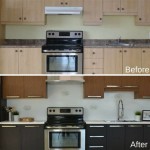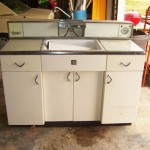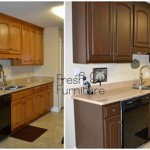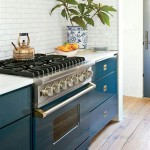Kitchen Cabinet Plywood Thickness: An Essential Guide
When selecting kitchen cabinets, the thickness of the plywood used in their construction is a crucial factor to consider. Plywood thickness significantly impacts the durability, longevity, and overall quality of your cabinets. Here's an in-depth guide to help you understand the essential aspects of kitchen cabinet plywood thickness.
Understanding Plywood Thickness
Plywood is a composite material made from thin layers of wood veneer glued together. The thickness of plywood is measured in plies, which represent the number of individual layers. Each ply typically ranges from 1/32 inch to 1/8 inch thick. The total thickness of plywood is determined by multiplying the number of plies by the thickness of each ply.
Optimal Plywood Thickness for Kitchen Cabinets
For kitchen cabinets, experts recommend using plywood with a thickness of at least 1/2 inch, which is approximately 12 plies. This thickness provides ample strength and durability to withstand the rigors of daily use, including heavy pots, pans, and other kitchen appliances. Thicker plywood, such as 3/4 inch (18 plies) or 1 inch (24 plies), offers even greater strength and stability, especially for larger or heavier cabinets.
Benefits of Thicker Plywood
Choosing thicker plywood for kitchen cabinets offers several advantages:
- Enhanced Durability: Thicker plywood can better withstand the weight of heavy items, preventing sagging or deformation over time.
- Improved Longevity: Thicker plywood is more resistant to wear and tear, extending the lifespan of your cabinets.
- Greater Stability: Thicker plywood provides a more stable base for cabinet doors and drawers, ensuring smooth and reliable operation.
- Reduced Noise: Thicker plywood dampens sound vibrations, creating a quieter kitchen environment.
Considerations for Thicker Plywood
While thicker plywood offers numerous benefits, there are a few factors to consider:
- Cost: Thicker plywood is typically more expensive than thinner plywood.
- Weight: Thicker plywood is heavier, which may require additional support in the cabinet structure.
Conclusion
The thickness of plywood used in kitchen cabinets is a critical factor that affects their durability, longevity, and overall quality. Experts recommend using plywood with a thickness of at least 1/2 inch for optimum performance. Thicker plywood, such as 3/4 inch or 1 inch, provides even greater strength and stability for larger or heavier cabinets. By selecting the appropriate plywood thickness, you can ensure that your kitchen cabinets will meet your needs and stand the test of time.

How To Build Base Cabinets For A Kitchen Island Tutorial

Cabinet Quality Kitchen Rta Cabinets Orange County Pre Made Whole Quartz Countertop Slab Prefab Granite Installation

Cabinet Composition What Makes A High Quality

Homeibro 18 In W X 12 D 30 H Shaker White Plywood Ready To Assemble Wall Kitchen Cabinet Hd Sw W1830 A The Home Depot

Choosing The Best Type Of Plywood For Cabinets Columbia Forest S

Which Plywood Is Best For Modular Kitchen Designcafe

Which Plywood Is Best For Modular Kitchen Designcafe

Modular Kitchen Cabinet Plywood Thickness 16mm Square Feet At Best In Bengaluru Neo Wood Interiors

Ink Blue Matte Bevel Shaker Cabinets R Us Showroom Burnaby Design Merit Kitchens Cabinet Dealer

Choosing The Best Type Of Plywood For Cabinets Columbia Forest S
Related Posts








